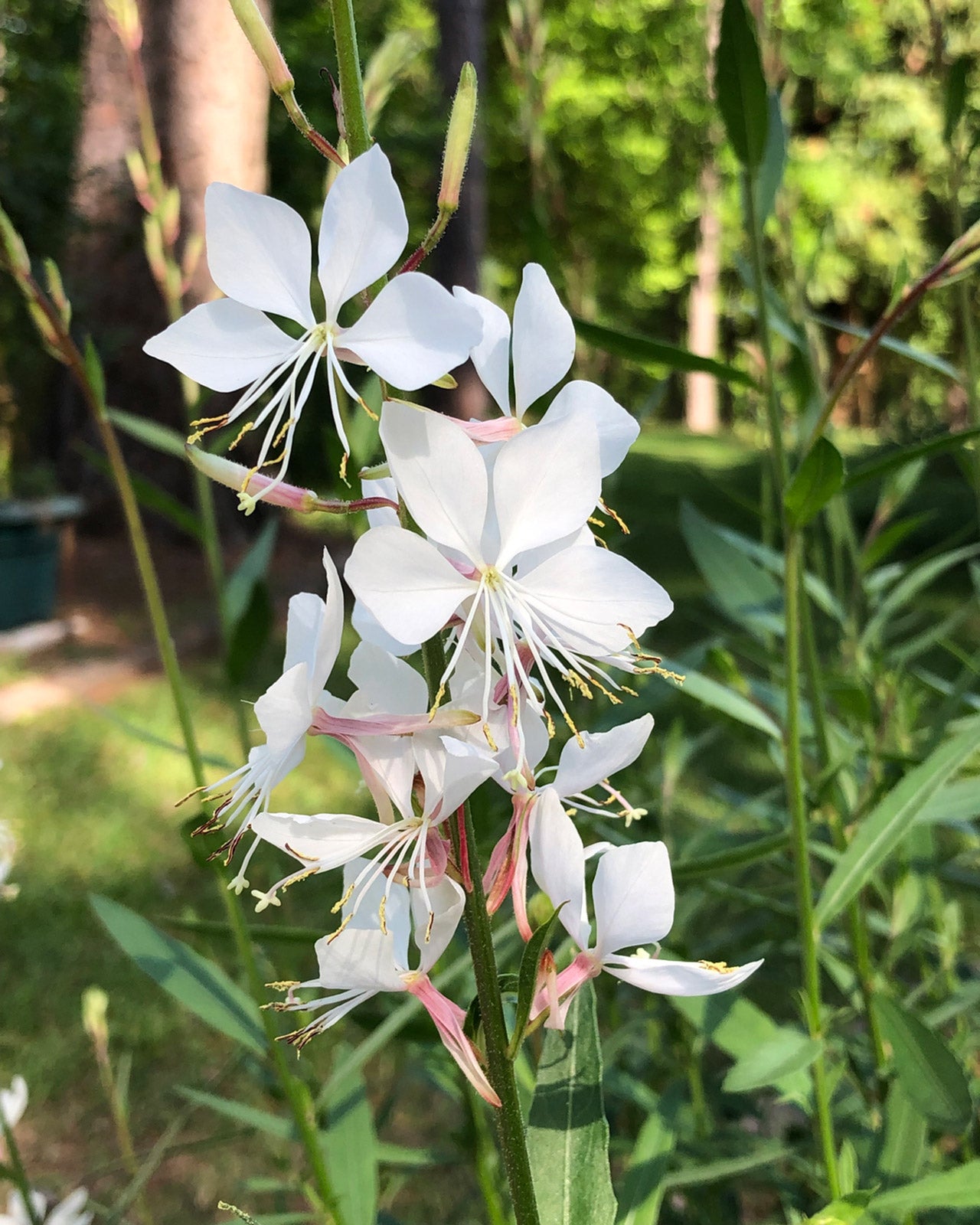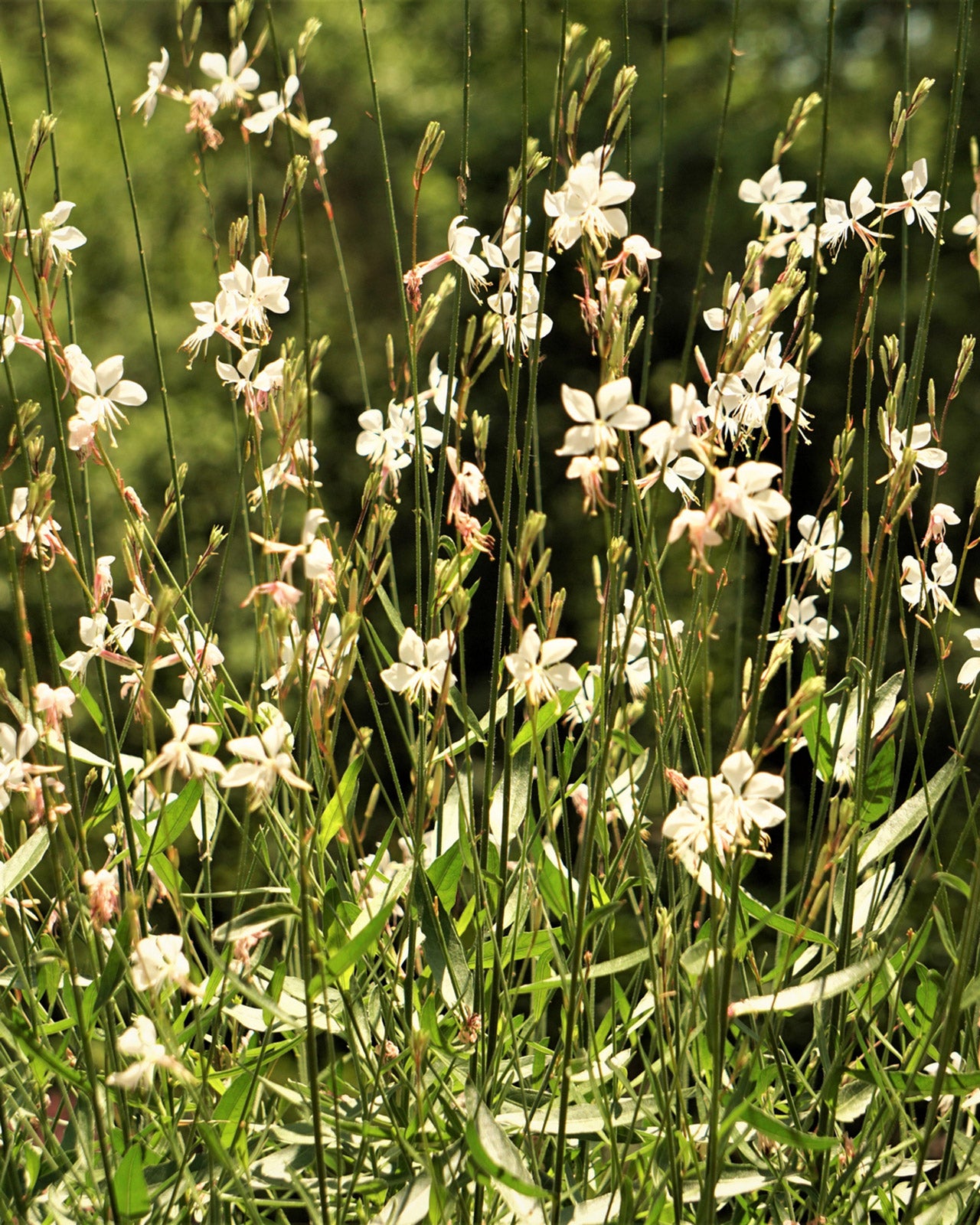


-
Why we like this plant
Oenothera 'Whirling Butterflies' is perfect for adding delicate movement and lightness to garden borders. Its pure white flowers, extended blooming season, and pollinator-friendly nature make it an excellent choice for cottage gardens, prairie planting, and wildlife-friendly spaces.
-
About this plant
Oenothera lindheimeri 'Whirling Butterflies', also known as Gaura lindheimeri, is a low-maintenance, drought-tolerant perennial that brings a soft, naturalistic feel to borders. Its slender, arching stems bear pure white, star-shaped flowers that resemble dancing butterflies, fluttering in the wind. The narrow, lance-shaped green foliage forms a neat, bushy base, while its long flowering period ensures months of garden interest. Loved by bees and butterflies, this resilient plant thrives in well-drained soils and full sun, making it perfect for prairie-style gardens, cottage borders, and pollinator-friendly planting schemes.
-
Key features
- Elegant, butterfly-like white flowers
- Exceptionally long flowering period from late spring to autumn
- Airy, naturalistic growth habit adds movement to borders
- Drought-tolerant and thrives in poor soils
- Attracts bees and butterflies
-

Height and
spread -

Growth
habitClump-forming, upright, airy
-

Moisture
Drought-tolerant; prefers dry to moderately moist conditions
-

Position in
the GardenBorders, prairie planting, cottage gardens, wildlife-friendly gardens
Planting guide
- Plant in well-drained, sandy or loamy soil
- Position in full sun for best flowering
- Space plants 50-60cm apart to allow for spreading
- Water well after planting to establish roots
Care tips
- Plant in well-drained soil in full sun
- Water occasionally; drought-tolerant once established
- Deadhead spent blooms to prolong flowering
- Cut back by half after the first flush to encourage a second bloom
- Divide clumps every few years to maintain vigour
Winter care
- Hardy in mild climates; may need mulch protection in colder regions
- Leave seed heads for winter interest or cut back in late autumn
- Trim old growth in early spring to encourage fresh shoots












